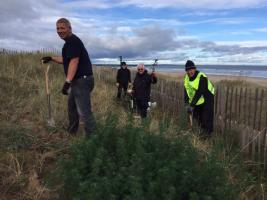David Stutchfield - St Andrews' Biomass District Heating System
Tue, Feb 23rd 2021 at 7:00 pm - 9:00 pm
Host - Grant Cargill;
Reception - Anne Tait,
Club members please log in for more information.
David Stutchfield, who is sustainability manager at the University of St Andrews gave an insightful and interesting talk on the biomass district heating system.
The university has a vision of energy sustainability and a net zero carbon footprint by 2035, ten years before Scottish government target dates.
In doing this they looked at the total carbon footprint of the university from purchasing, energy and waste to students living and travelling to and from the university.
The biomass plant is situated at the former paper mill at Guardbridge, the site purchased in 2010. It project cost £25 million with a grant of £10 million from the Scottish government and a loan of £11 million from the European union.
The 6.5mW boiler at Guardbridge has 23 kilometers of heavily insulated pipes leading to and returning from 48 university buildings at the North Haugh, David Russell Halls and Fife Park including 3000 student rooms.
The water in the pipes is at around 95C when leaving the plant and could lose 8 to 10% in transit (though in practice the water temperature arriving at the Gateway building is at 92.5C). The total annual carbon saving is nearly 6400 tonnes.
Wood chip fuel is provided mainly by the forestry within a 15 mile radius of St Andrews. Sustainably sourced from land replanted after felling on a 25 year cycle. The carbon cost of felling, chipping and transporting has been included in the figures.
The university continues to develop more efficient heating systems in its other buildings and also invests in energy saving measures including changing to LED types of lighting.
David was introduced by Grant Cargill who also proposed the vote of thanks.
'What We Do' Main Pages:
